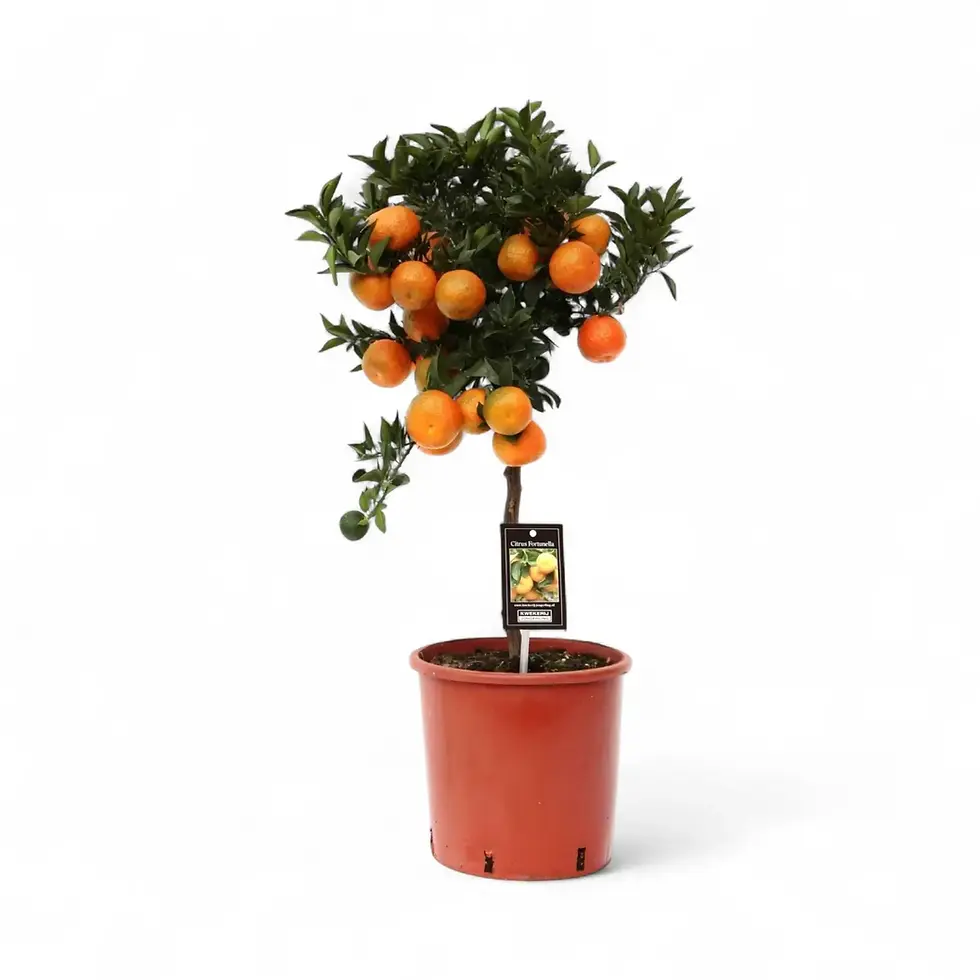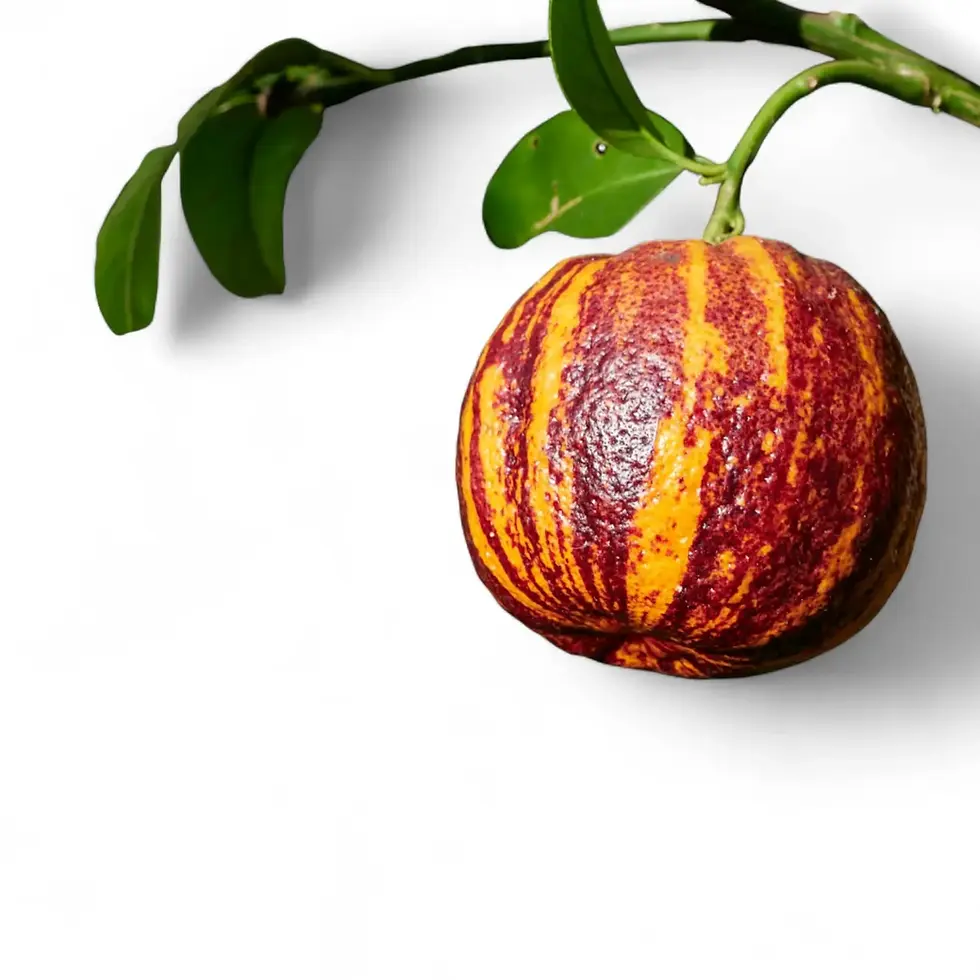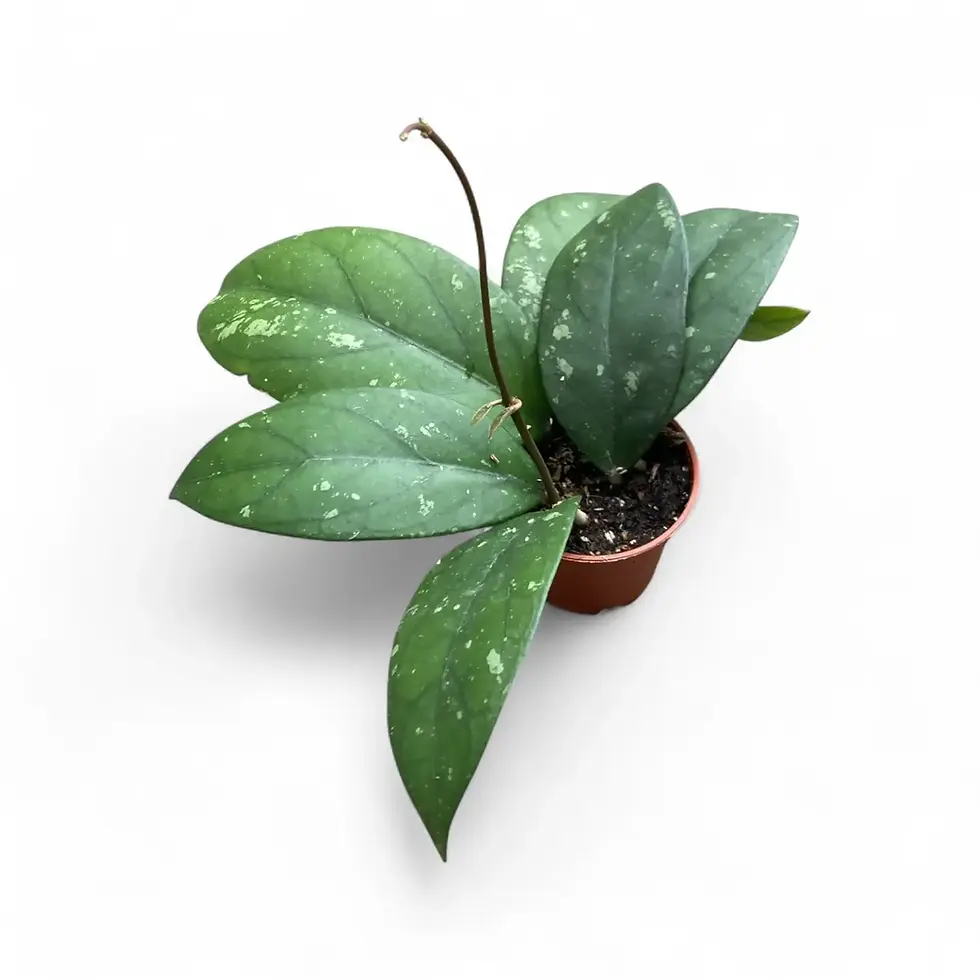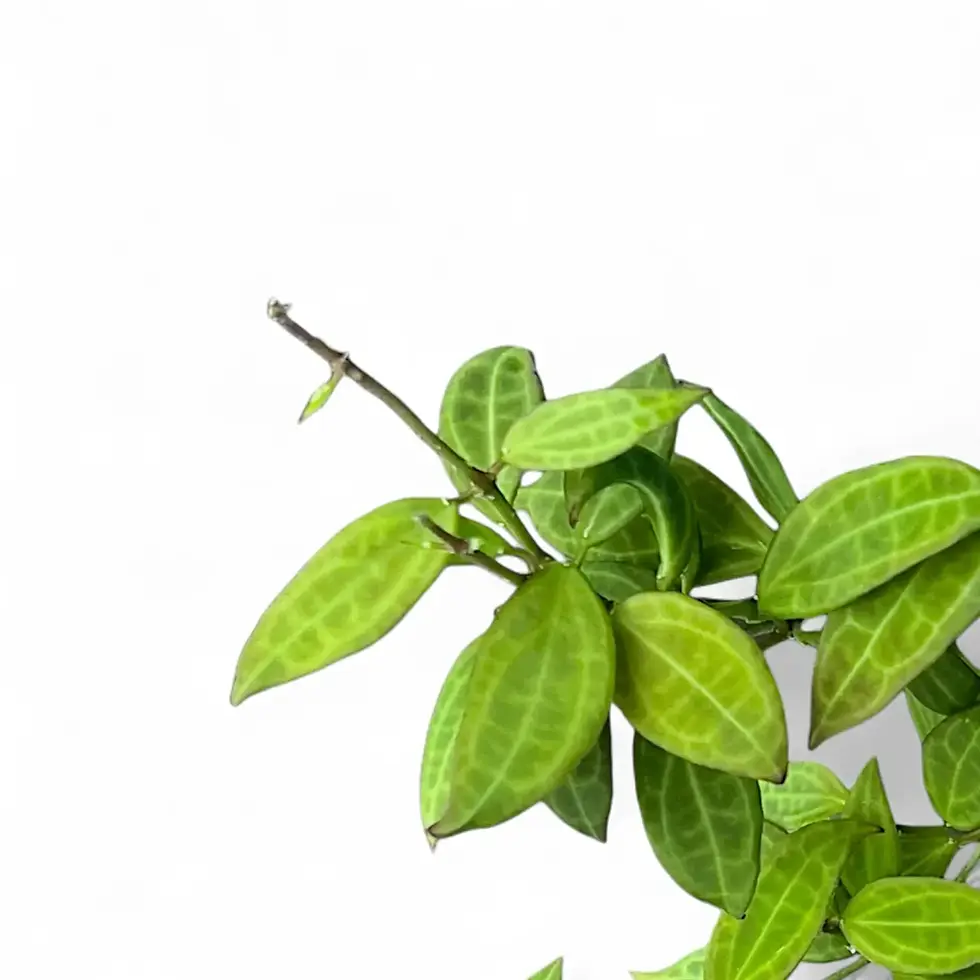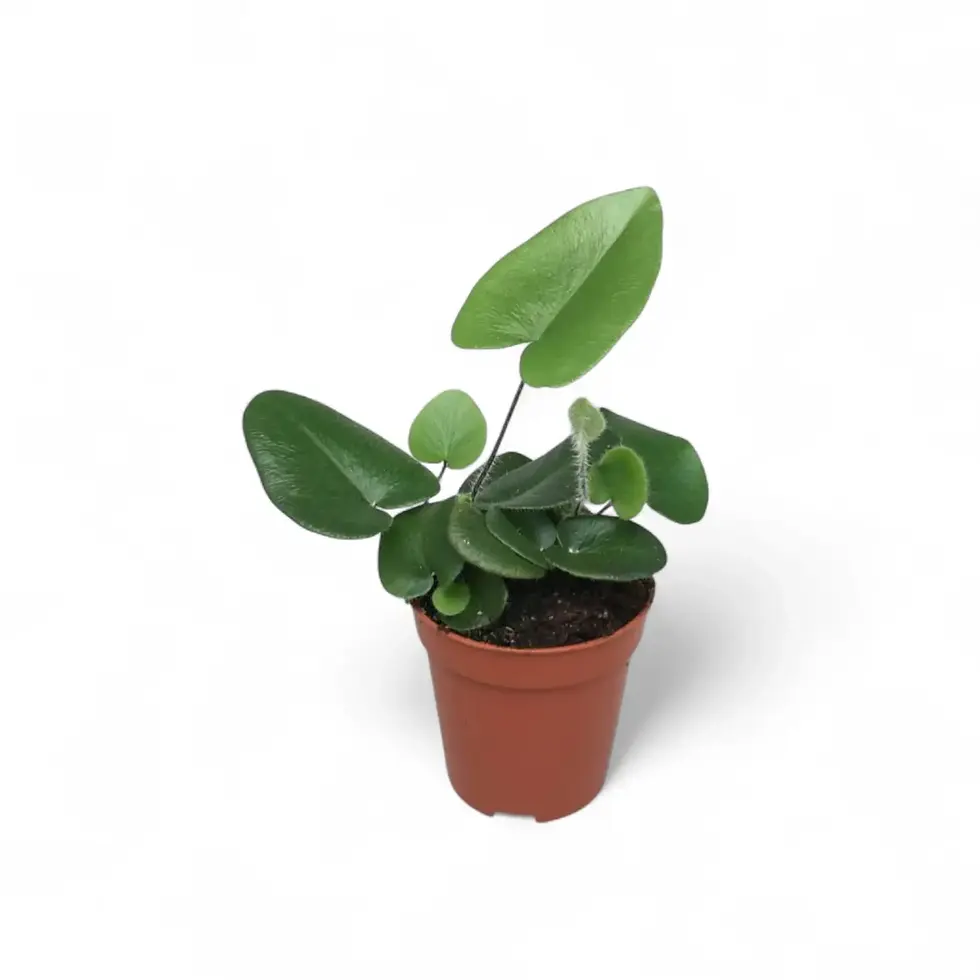Philodendron patriciae – long, pendulous foliage for advanced aroid growers
Philodendron patriciae is an appressed-climbing epiphyte from Colombia’s Pacific lowland rainforest (Chocó region). Known for exceptionally long, narrow blades that drape elegantly, it develops a subtle quilted surface as leaves mature. With firm vertical support, stable moisture, and bright, indirect light, this species produces architectural foliage that becomes a true centerpiece over time.
Why Philodendron patriciae stands out
- Growth habit: Appressed climber with short internodes and abundant adventitious roots that clasp supports.
- Leaf form: Very narrow, pendent blades; well-grown indoor plants routinely achieve 50–100 cm leaves over time.
- Texture shift: Juvenile blades appear more matte; mature leaves develop gentle corrugation (“quilted” look) between the primary lateral veins.
- Origin & ecology: Native to humid, lowland rainforest on Colombia’s Pacific side, typically on trunks in filtered canopy light.
Size and form at dispatch
We provide current pot size and approximate plant height on the product page. As a guide for expectations:
- Typical pot: 12–15 cm nursery pot
- Approximate height: 25–40 cm (not including pole)
- Leaf count: usually 4–7 leaves depending on flush and season
Images may show established specimens; individual plants vary in leaf size and number at time of shipping.
Care guide – stable routines, larger leaves
- Light: Bright, indirect light. Avoid prolonged direct sun on blades to prevent scorch and loss of surface quality.
- Water: Water when the top 2–3 cm of substrate are dry; drench and drain fully. Aim for consistent moisture without waterlogging.
- Substrate: Airy aroid blend balancing oxygen and retention (e.g., ~35% fine orchid bark, 25% coco fibre, 20% perlite or pumice, 10% composted material, 10% horticultural charcoal).
- Feeding: Balanced liquid fertiliser at 25–50% label rate every 4–6 weeks; adjust to growth rate, not to calendar months.
- Temperature: Best between 18–27 °C; growth slows with extended exposure below ~15 °C.
- Humidity & airflow: Comfortable around 50–65% with gentle, steady airflow to keep leaf surfaces clean.
- Support: A firm, moisture-retentive pole (moss/fibre) secured at each node promotes larger leaves and tighter internodes.
Training, pruning, and propagation
- Training: Press the stem flush to the pole and secure at each node; appressed contact supports leaf expansion.
- Pruning: Remove senescent leaves at the petiole base; tip-prune only to manage height or to obtain cuttings.
- Propagation: Single-node cuttings with a visible root nub root well in moist sphagnum, an airy substrate, or inert/semi-hydro media supplied with a complete nutrient solution.
Science-based notes
- Leaf “quilting” explained: Subtle bullation arises as secondary veins elevate tissues between primary laterals, producing a soft corrugated effect.
- Adventitious roots: Clasping roots at each node increase anchorage and can absorb moisture from a damp support.
- Inflorescence: Typical aroid spadix surrounded by a green spathe; flowers are incidental in cultivation and often removed to conserve energy.
Troubleshooting – quick diagnostics
- Brown margins: Usually inconsistent moisture or late watering; verify root health and wet–dry rhythm.
- Pale, thin blades: Often low light or insufficient nutrition; increase light intensity (still indirect) and review feeding.
- Soft stems, sour substrate: Overwatering and low oxygen; refresh the mix, prune damaged roots, and improve drainage.
- Pests: Monitor for thrips, spider mites, and mealybugs; isolate and treat early with targeted measures (e.g., insecticidal soap per label).
From Colombia’s canopy to your collection – Philodendron patriciae
This species originates in Colombia’s Pacific lowlands (Chocó). In habitat, blades have been reported to exceed one metre on mature, well-supported plants. Indoors, leaf size scales predictably with light, nutrition, and firm appression to a damp pole.
Frequently asked questions about Philodendron patriciae
- How fast does it grow indoors? Moderate. Growth accelerates once the stem is firmly appressed to a moist pole and root volume increases.
- Do I need a pole? Strongly recommended. Appressed climbers produce larger, straighter leaves with reliable support.
- Is semi-hydro suitable? Yes. Use an inert medium and a complete nutrient solution; maintain root oxygenation and avoid stagnant reservoirs.
- Why are my new leaves smaller? Common after relocation or dips in light/nutrition; improve stability and expect size to recover with subsequent leaves.
- Can it tolerate medium light? It will survive, but internodes lengthen and leaves remain smaller; brighter indirect light gives better form.
Etymology and publication
Philodendron derives from Greek phílos (“loving”) and déndron (“tree”), reflecting its climbing habit. Philodendron patriciae was described by Thomas B. Croat in 2010 (Aroideana 33) and named in honour of his wife, Patricia.
Safety
Tissues contain insoluble calcium oxalate. Avoid ingestion and contact with eyes or mouth; keep out of reach of children and pets.
Order Philodendron patriciae
Add Philodendron patriciae to your collection for long, architectural foliage and steady, science-based performance. Order today and train it up a firm pole for dramatic leaves over time.
Philodendron patriciae
Philodendron patriciae comes in following sizes:
S – comes in a ⌀ 10 cm pot and is approximately 35 cm tall
M – comes in a ⌀ 17 cm pot and is approximately 40 cm tall
L – comes in a ⌀ 21 cm pot and is approximately 60 cm tall






